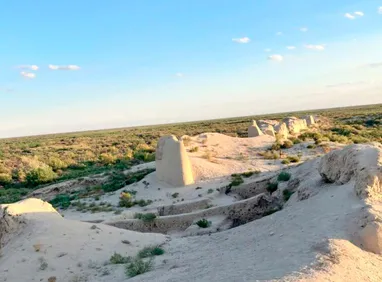WNAM REPORT: Members of the Turkmen-Russian Margiana archaeological expedition discovered new historical artifacts during the autumn season of field work at the ancient settlement of Gonur-depe.
A cult vessel, a double-sided stone amulet, more than ten seals and other interesting finds were found.
During the study of children’s burials, 11 seals were discovered, among which one stone seal is a four-pointed star with jagged edges, in which a four-petal flower is inscribed. On the reverse side of the seal there is a scratched quadrangle located at the base of the rays.
Of particular value is another round seal depicting two bird griffins, spreading their wings and touching with their beaks, legs and chests. On the head of each griffin, eyes, combs and beards reminiscent of a rooster are clearly visible. Behind the back of one is a crescent moon, behind the back of the other – three dots, most likely symbolizing stars.
This discovery became the first and most ancient in the territory of Turkmenistan, depicting not only the sun and the moon, but also other astronomical objects.
A two-sided talc chlorite stone amulet is another find from the autumn excavation season. On one side is a winged griffin with an open mouth, the wings of which flow into the sides of the amulet, and on the other side is a bull, the tail and tongue of which represent snakes with open mouths.
Furthermore, a ritual vessel similar to those found in the Gonur sanctuaries and other archaeological sites in Margiana was found in the ram’s burial. Terracotta animal figures were stuck onto the rim of the vessel, and snakes crawling out were depicted in relief on the inner walls. However, this vessel is distinguished by the presence of strange small creatures similar to leeches stuck to its bottom, which is the first time they have been discovered in Margiana.
In one of the excavated shallow pits, an animal skull was also found, the size of which indicates that it may have belonged to either a horse or a kulan, the source notes.








